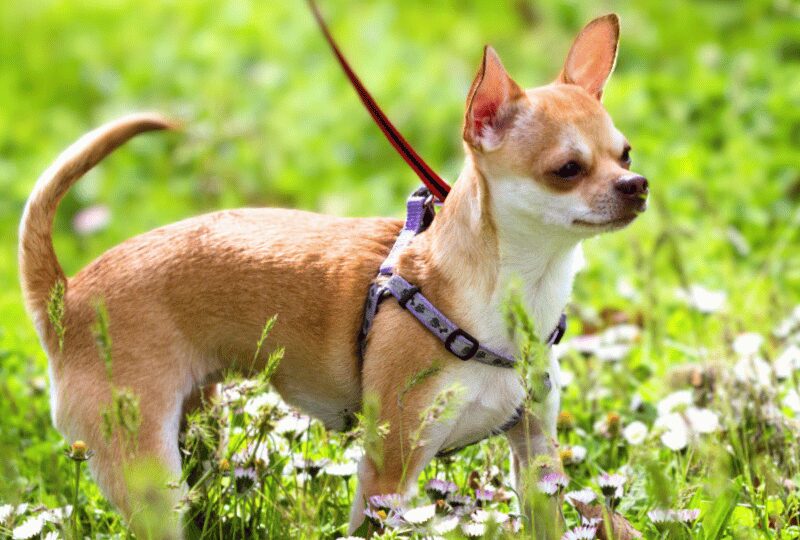We’ve all seen teams of professional sled dogs equipped with their harness mushing along the snow. Is adding a harness to your house pup going to turn them into a professional pulling machine?
I sat down with one of Not A Bully’s Advising Veterinarians, Athena Gaffud to get an answer and here’s what we came up with:
Harnesses themselves do not inherently encourage dogs to pull. Instead, pulling is a result of dogs’ natural opposition reflex, where they pull against pressure, and a lack of leash training. Remember, leash walking, just like potty training or sitting on command, is a skill that has to be taught.
While harnesses can make it easier for dogs to pull without the discomfort of a collar, the harness isn’t the root of the pulling.
Training a dog not to pull involves positive reinforcement and teaching impulse control. A front-clipping no-pull harness can aid in reducing pulling by providing the owner with more control.
That’s the quick answer and should be enough to get you started but we’ll take a much closer look at everything you need to know!
What Is Opposition Reflex?
Many dogs have what’s called opposition reflex which simply means that they pull against pressure. This might sound like an exclusively canine reflex but it’s a normal reaction that humans have too. If someone leans against, you’ll naturally lean back in order to balance yourself. While the name “opposition reflex” sounds a little scary, that’s really all it is.
Using a harness might make opposition reflex more obvious or allow your dog to pull more strongly, but the reality is that a dog will also pull against a collar as well. You may feel the pull of the harness more since your dog may be able to get more leverage or pull harder without the discomfort that comes from a collar.
The reason adverse equipment like prong collars or choke chains seems to stop pulling is because it can be uncomfortable and painful to pull against. However, dogs do not truly understand the behavior you want with that kind of training method, instead, they are simply avoiding an unwanted consequence while not truly understanding what you do want from them.
So, Do Harnesses Encourage Pulling?
Even though the opposition reflex might make it feel like your dog is pulling more, the dog is pulling because they have not been trained to walk on a leash, not because they have a harness on.
While some dogs seem to be born walking nicely on the leash, learning how to walk on the leash is a skill most dogs have to be taught.
Dogs who lack impulse control often have a hard time paying attention to you outside and pull towards other dogs, new people, critters to chase, or weird smells. Being dragged around by your powerful dog is not fun and is a frustrating habit.
But it’s worth emphasizing that it’s the distractions and lack of training that are making your dog pull, not their harness.
Nonetheless, the harness does make it easier for them to pull. A harness does not cut into their neck as much as a collar does, and depending on the type of harness they are wearing, it can help them feel stronger when pulling toward a piece of goose poop or spilled ice cream which is much more interesting than listening to you.
Using a harness where you clip the leash to the front can help give you more leverage than a traditional harness where you attach it to the back. But ultimately, to discourage your dog from pulling when wearing a harness, you need to make yourself more interesting than whatever they are pulling towards.
Impulse control is the foundation of a dog not pulling. They have to learn how to control their emotions so that they listen to you and not drag you down the street. Games like the one in the video below should be played while you are also training your dog not to pull. These good habits will build on one another.
How Do I Train My Dog Not To Pull On The Harness?
Using positive reinforcement, it is possible to train your dog to not pull when wearing a harness.
A harness is usually a safer choice to walk your dog over a collar. Dr. Gaffud explains that “If your dog pulls on a collar it can damage their neck and trachea, especially in smaller breeds.”
Additionally, a properly fitted harness, especially if you have a no-pull harness that clips on the front, usually helps decrease pulling. It gives you, the walker, more leverage and control so your dog does not drag you around as well as being a safer piece of equipment for your dog that they can wear all the time.
Besides some foundations in impulse control, there are several techniques to use positive reinforcement and marker training to help your dog learn the correct loose leash behavior. These exercises help your dog learn the behavior you are looking for by rewarding them with a treat and praise when they are walking on a loose leash.
I use two main methods when training loose leash walking with my dogs.
The first one is the game my mentor called “Slackline.” Right when my dog is about to hit the end of the leash, I stop. Once they give me slack and look at me, I mark the behavior (usually with a marker word or clicker) and reward them with a treat.
While the first walks are slow and painful, in the long run, my dogs understand the behavior I expect because I am using positive reinforcement. Keep in mind, this is not a harsh correction and you and your dog should be walking very slowly when you start this. That way your dog isn’t going from a full run to a tight leash!
The second game is a change direction game. As soon as my dog is about to hit the end of the leash, I turn around and go the other way. My dogs have to learn to pay attention as they never know what I am going to do. This is a good one when I am walking all of my dogs since we never stop moving and I do not have to fumble with treats. In this case, continuing the walk is reward enough.
Is It Okay To Let My Dog Pull Sometimes?
Some dogs are not very good off-leash, so it is important to have a well-fitting harness and train them to walk on a loose leash.
However, what if you have a high-energy dog that is terrible off leash but you want them to pull you on a bike or help you go faster on a run? Breeds like huskies are notorious for being terrible off-leash but excel at pulling sports like skijoring, or pulling you on skis.
Walking on a harness needs to be black and white for dogs, do not let them pull!
However, dogs can learn that different equipment means different things. I skijored and did canicross with my husky mix for years, but she always walked nicely when we were not doing a pulling activity. This is because she knew the difference between her two harnesses, it was very obvious to her that when her skijoring harness went on she got to pull, but when her regular harness went on it was time for slower and loose leash walking.
Final Thoughts
There is a huge misconception that a harness will turn your dog into a sled dog, encouraging them to pull. While harnesses are more comfortable for a dog to pull, they do not cause a dog to pull. Dogs will pull in about any piece of equipment since dogs naturally pull because of opposition reflex.
Indeed, humans have harnessed that instinct to pull for centuries, but it is possible to train your dog not to pull in a harness. It takes patience, but dogs can learn the behavior of loose-leash walking. It is never too late to train your dog to walk nicely on their harness. Plus, more training and more exercise means your dog will be tired mentally and physically and ready for more cuddles with you on the couch.



